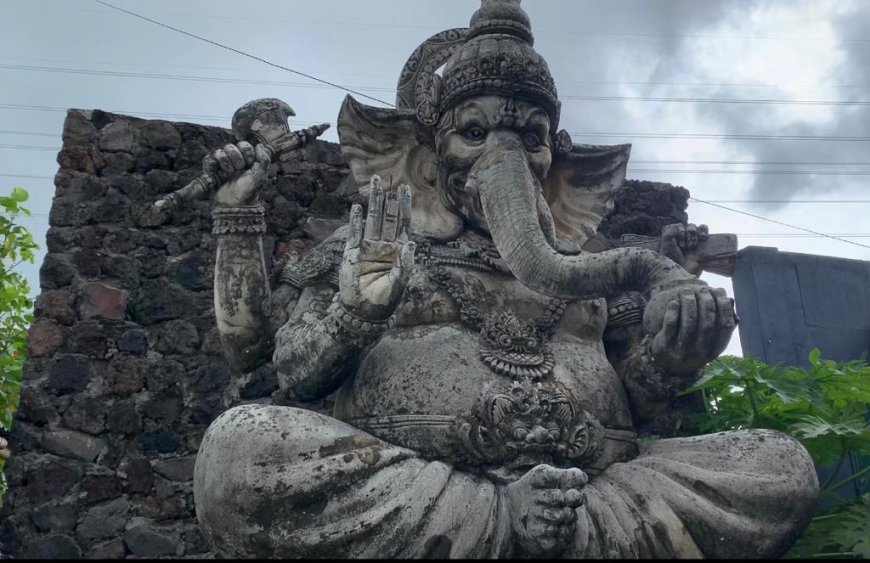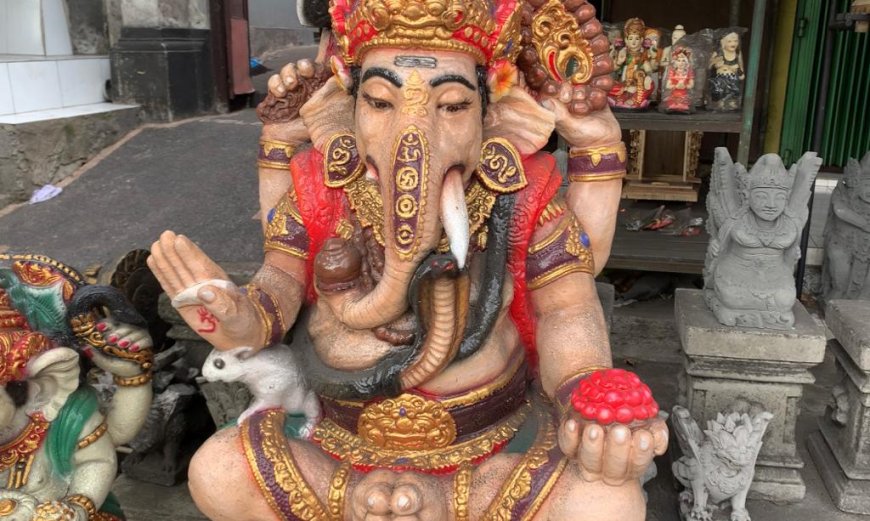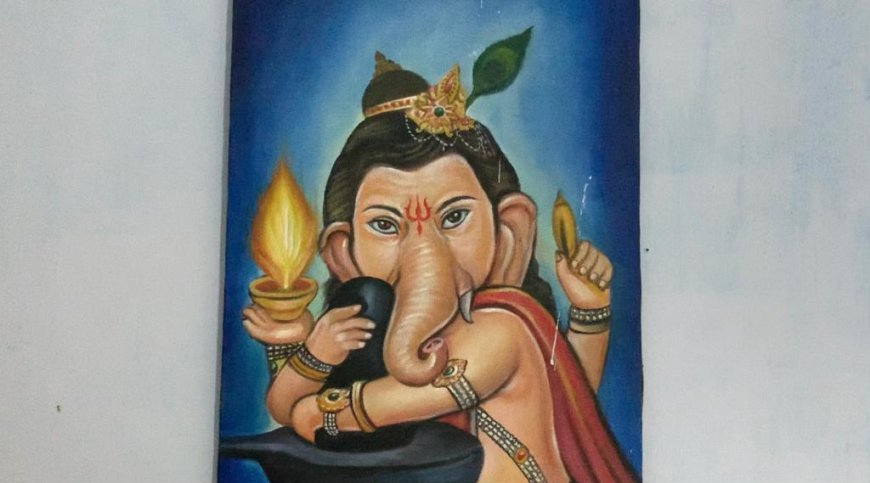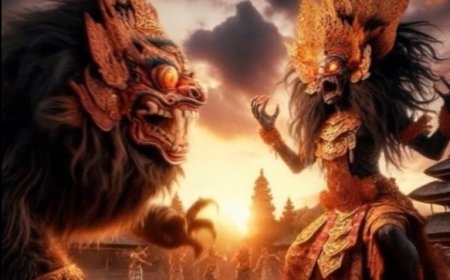Statue of Lord Ganesha, the God of Knowledge who has many meanings in life
In Bali, Hindus believe that God has many manifestations, called Dewa. They govern the universe and aspects of life. The Tri Murti Gods, Brahma, Vishnu, and Shiva, are famous. Worship is carried out through symbols of God such as statues or paintings. Ganesha, the God of knowledge, symbolizes values such as acceptance of truth, patience, non-hatred, and wisdom. Ganesha statues are often placed as symbols of wisdom, prosperity and success in Bali.

On the island of Bali, especially Hindu people, believe that God or Brahman has many names or manifestations. The manifestation of God is called Dewa, which means that God is part of the Almighty God or Ida Sang Hyang Widi Wasa.
The Gods are believed to protect and regulate the universe. They are responsible for various aspects of life, such as nature, weather, and the lives of living creatures themselves. There are many Gods in Hinduism and of course each God has different duties and obligations. Perhaps the most famous god among the wider community is Tri Murti, namely God Brahma, the creator of the universe, God Vishnu, the preserver of the universe, and God Shiva, the melter.
In Hinduism, worship or offerings to Gods are made to media which are considered symbols of the Gods themselves. For example, a statue, painting, or something else. These media are considered to be "manifestations" of the Gods who are worshiped and respected.
Instead of just being symbolic for worship, there are philosophies and sciences that we can learn and contemplate from the incarnations of God. One of the incarnations of God that can be studied in depth is God Ganesha. Lord Ganesha is a God who is worshiped as the God of knowledge, intelligence, and repeller of obstacles.

Marketing of Lord Ganesha Statues (Photo Source: Private Collection)
The embodiment of Lord Ganesha himself is a god with an elephant head and a human body. From the manifestation of Lord Ganesha himself, there are actually several philosophies that we can take and learn in this life.
The elephant's large ears show that in life, we must be able to accept and be open to truth and science. Apart from that, Lord Ganesha's ears can also symbolize that we must always listen well, from listening to words or advice from other people to listening to what we feel in our hearts. So, listening can lead us to the path of wisdom and intelligence.
Lord Ganesha's big nose symbolizes patience, where when we feel angry, we need to take a deep breath. This can help to control emotions and anger. Apart from patience, Lord Ganesha's nose represents non-hatred and is easy to forgive, when someone hurts us, forgiving him and believing in the law of Karma Phala will help us to free ourselves from hatred.
The elephant head symbolizes wisdom and strength, elephants are animals that have big brains. This means that we must accommodate as much knowledge as possible, the only thing that can stop us from gaining knowledge is ourselves if we don't want to continue learning and developing.
Lord Ganesha's small mouth tells us that in life, there is no need to always talk a lot, talking a lot without meaning is a waste. For this reason, we just need to talk when we feel the need to talk and not talk carelessly about things that are beyond our knowledge.
Apart from physical appearance, Lord Ganesha is depicted carrying a bowl. This bowl is symbolized as a bowl containing knowledge, the trunk of Lord Ganesha always enters the bowl, symbolizing that we must always seek knowledge, because knowledge is endless.

Painting of Lord Ganesha (Photo Source: Private Collection)
Maybe there is still a lot of philosophical art from Lord Ganesha or maybe we will discover it ourselves as time goes by. That is the art of philosophy, where everyone can interpret and define the same object with different meanings. But in the end, from the philosophy of Lord Ganesha we learn that we need references, experience or knowledge to know the meanings of things. To get that, we must have patience, humility, wisdom and toughness.
Back to the symbolism of Gods, Lord Ganesha is usually symbolized by a statue of himself, namely a creature with an elephant head and a human body. Apart from statues, you can find many paintings of Lord Ganesha himself. In Bali itself, almost all houses, especially Hindu ones, have a statue of Lord Ganesha and usually this is not just for display. As is known, Lord Ganesha is one of the most revered gods in Hinduism. Therefore, Hindus place statues of Lord Ganesha at home as a form of worship and a request for protection.
Apart from that, philosophically, people place a statue of Lord Ganesha at home as a symbol of wisdom, prosperity and success. The statue of Lord Ganesha has become a typical symbol of Balinese culture.































































